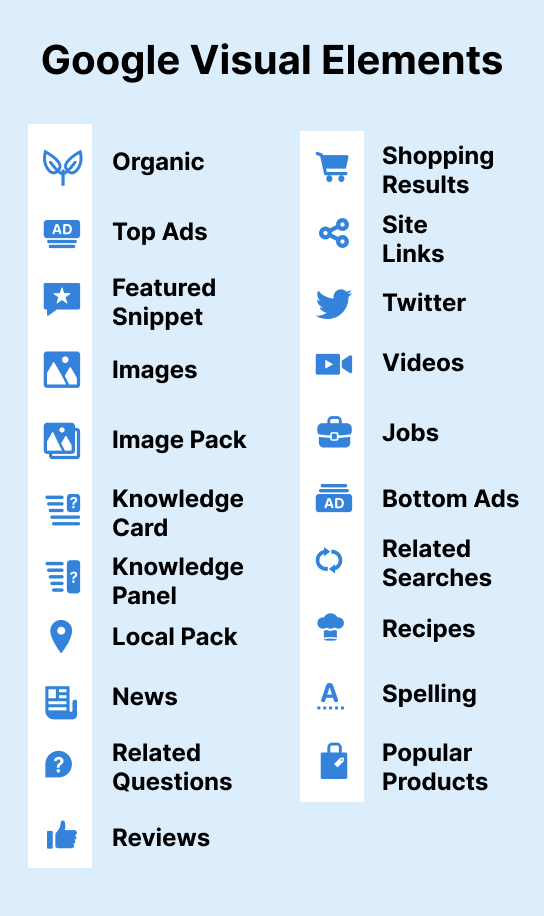On the right, above the SERP Stats in SERP X-Ray, you may see some icons which vary, depending on your topic. These are SERP features or what Google now calls visual elements. Here are the one’s that MarketMuse tracks.

Here are a couple of things to note about these visual elements.
- Organic — historically called “10 blue links” and “web results,” Google now calls these “text results.”
- Site Links — can appear within an organic listing and are determined by Google.
- Knowledge Card — appearing at the top of the search, this information comes from Google’s Knowledge Graph. They may be mistaken for a Featured Snippet but they’re not labelled as such. Try searching “when was Kalicube founded” to see an example.
- Local Pack — is a map along with businesses listed alongside their geographic location. You’ll see this appear when a search term implies that a searcher is looking for results local to them.
- News — this section appears as “Top Stories” when searching for something that’s getting news coverage.
- Related Questions — formerly known as “People Also Ask,” this is a cluster of questions that are related to what the user initially searched for.
- Twitter — a box with three recent tweets appears when Google feels there’s a relevant Twitter discussion for the search term.
- Knowledge Panel — this appears when searching for entities (people, places, organizations, and things) that are in Google’s Knowledge Graph.
- Adwords (top and bottom) — In countries where Google offers continuous scrolling, Bottom Ads can appear after every 10 text results.
- Featured Snippets — these boxes have the reverse format of a regular search result where the description is shown first, then the URL and title. When a Featured Snippet appears, it’s placed above the organic search results. They are labelled as Featured Snippets.
- Shopping Results — data for this visual element (a carousel) comes from Google Merchant Center and is identified as being sponsored.
- Popular Products — essentially an organic version of Shopping Results. Here too, Google Merchant Center supplies the necessary data.
